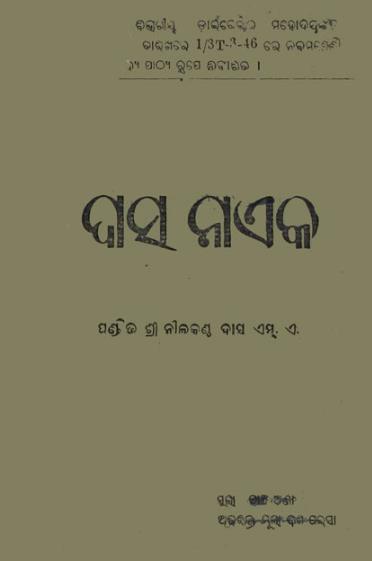Kavya, Enoch Arden, Tennyson Dasa Naik, a notable work by Nilakantha Dash published in 1923 with a later edition in 1946, serves as a significant literary bridge connecting Odia poetry with the themes explored by Alfred Lord Tennyson, particularly in his poem Enoch Arden. This work encapsulates the essence of love, longing, and the human condition, reflecting both the elegance of Tennyson’s poetic style and Dash’s unique Odia perspective. Through this intricate interplay of cultures and emotions, Dash contributes to the richness of Odia literature and expands the dialogue between Western and Indian literary traditions.
At its core, Kavya, Enoch Arden, Tennyson Dasa Naik offers an exploration of Tennyson’s classic narrative poem Enoch Arden, a poignant tale of love, sacrifice, and redemption. The narrative revolves around Enoch, a faithful husband who leaves his wife, Annie, to seek fortune at sea, only to face unforeseen trials that lead to heart-wrenching consequences. Dash’s work not only presents a translation of Tennyson’s poem but also an interpretation and adaptation that aligns with the cultural and emotional sensibilities of Odia readers.
Nilakantha Dash, through his poetic prowess, effectively captures the essence of Tennyson’s themes while incorporating elements of Odia culture and tradition. His portrayal of love—deep, devoted, and at times tragic—resonates powerfully, making the text relatable to the Odia audience. The adaptation reflects Dash’s recognition of universal emotions, bridging the gap between two literary worlds.
The central theme of love in Kavya, Enoch Arden, Tennyson Dasa Naik is underscored by the poignant narrative of Enoch Arden. Dash delves into the complexities of devotion and the suffering that often accompanies deep affection. Enoch’s steadfast love for Annie and the painful conflicts arising from his absence resonate with readers, inviting reflection on the enduring nature of love against the backdrop of hardship and sacrifice.
Dash’s adaptation also emphasizes the notions of loyalty and the repercussions of choices made in love. His nuanced exploration of these themes reflects not just Tennyson’s influence but also the broader cultural context of Odia literature, where emotional depth and relational dynamics are often key focuses.
Nilakantha Dash’s literary style is characterized by its lyrical quality and sensitivity to emotion. His ability to evoke vivid imagery and profound feelings mirrors Tennyson’s artistry, enhancing the emotional weight of the narrative. Dash’s use of traditional Odia poetic forms enriches the text, ensuring that it resonates deeply with readers familiar with the rhythm and meter of Odia poetry.
Moreover, by drawing inspiration from a Western classic while infusing it with Odia cultural motifs, Dash creates a dialogue between traditions. This blending of influences speaks to a wider literary trend of the time, where Indian writers began to engage with and reinterpret Western literature within their cultural contexts.
Books Info
| Books name | Dasa Naik / ଦାସ ନାଏକ |
| Author | Nilakantha Dash |
| No Of pages | 79 |
| Publisher | Student Store |
| Publication | 1923, 1946 3p. |
| Printed At | Sri Damodara Rath |
| Distributor | NA |

